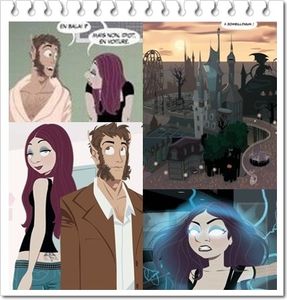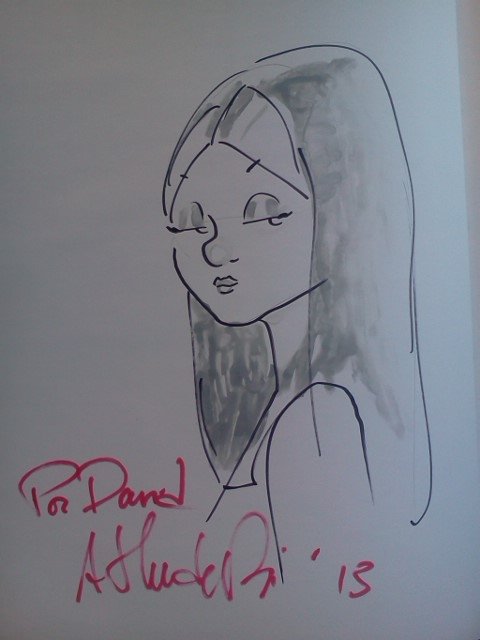


A scene, for example, in which Gretchen takes Hector for a ride on her skateboard-broomstick has a whizzy swoop and swish, and will look spectacular in 3D. Ultimately, storytelling seems to be less the point than finding instances to show off the dazzling visuals, a hyper-seamless melding of 3D rendering and 2D design that extracts lines and shadows from the figures but still has an extraordinary fluidity. Less energy is expended on developing an engaging narrative trajectory. The script by de Pins and Ducord spends a disproportionate amount of time establishing the contours of its universe, clearly with an eye to world-building sufficiently to lay the groundwork for sequels. Antagonism is mainly provided by vampire Steven (Alexis Tomassian/Mark Jane), a chiseled looker who conforms to the Twilight-established physical characteristics of a vampire, down to the sparkly-in-sunlight skin and withering condescension toward lesser beings. Hector also develops ace ax-man skills on the electric guitar, which comes in handy when he ends up forming a very Gallic-style rock combo with assorted other characters from the park, including zombie-skeleton Sirius (Mat Bastard/Doug Rand) and comely, sleeve-tattooed teen witch Gretchen (Kelly Marot/ Kaycie Chase), who is literally the Devil’s daughter and has been working as a sulky intern at the park. Francis has no choice but to bite Hector and thereby turn him into a monster like himself, although the form Hector eventually takes - with a beefy, super-strong physique, asymmetric horns and tremendous agility - conforms neither to vampire, werewolf nor zombie characteristics, but has a little bit of everything. Unfortunately, when he takes an elevator down to the ninth sub-basement floor, he discovers that the park is built over a gateway to hell, a purgatory ruled by the Devil (Emmanuel Jacomy/Geoffrey Carey), to whom park manager and head vampire Francis (Alain Choquet/Jerry Di Giacomo) must answer.


 0 kommentar(er)
0 kommentar(er)
